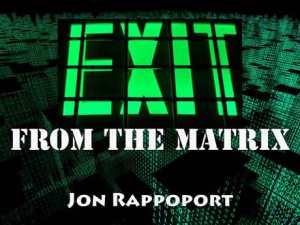Surrealism and Magic
by Jon Rappoport
July 26, 2011
Well, apparently my email service, Constant Contact, suddenly has an allergy to italics. In my last article, it omitted a quote from Andre Breton, one of the key founders of the Surrealist movement of the 1920s and 30s.
So here it is: “The imagination which knows no bounds is henceforth allowed to be exercised only in strict accordance with the laws of an arbitrary utility; it [imagination] is incapable of assuming this inferiority for very long and, in the vicinity of the twentieth year [of life], generally prefers to abandon man to his lusterless fate.” (1924)
Breton states the same basic problem in a marvelous way, six years later: “…The cancer of the mind, which consists of thinking all too sadly that certain things ‘are,’ while others, which well might be, ‘are not’.”
Surrealism was a movement in the arts which attacked and went beyond so-called classical standards of aesthetics. It was also attacking the basis of the conventional space-time continuum. That was its launching pad.
Surrealism, in painting, poetry, fiction, dance, theater, film, revealed that new startling realities could be created. Of course, many people were put off. Their obsessed attachment to simplistic harmonies and symmetries was shaken.
Surrealism was a form of magic, in so far as it penetrated beyond the assumed monopoly of this universe and its laws. It suggested the existence of an unlimited number of other universes.
Physics was beginning to grapple with this, too, but in much less adventurous manner.
Although they were never called Surrealist, films began to appear featuring men like Buster Keaton, Groucho Marx, Laurel and Hardy, in which ordinary physical and social reality was turned on its head, with slapstick mania. On that level, the public responded enthusiastically, as if too say, “We know life as we live it is crazy, and we love to watch it being dismantled by experts.”
It was the arrival of the archetype of The Joker for a mass audience. The delight was palpable.
These films were a continuation of the long tradition of farce, injected with surreal tendencies.
For many Americans, they marked the beginning of a suspicion about the overarching monopoly of structures.
Part of magic is The Joke. What passes for reality collapses before our eyes. One might say the universe is holding back and sitting on an enormous burst of laughter, and liberating it from its cave signals the onset of a new and superior state of health. And power.
Of course, most people, when the latest guffaw dies down, obediently return to their enclosed lives. They don’t get the full message.
Salvador Dali once wrote, “It is not necessary for the public to know whether I am joking or whether I am serious, just as it not necessary for me to know it myself.”
This is the kind of corrosive statement many Americans detest as “European.” But where did their beloved Marx Brothers and Oliver and Hardy come from? Farce had its roots in France and England, ancient Rome and Greece. The Puritans may have been refugees from an autocratic European religious power, but on these shores they built another tower of rigid obedience to a one and only reality.
In the hands of certain Surrealists, reality was exposed as a con game. They toyed with it. A later descendant, the playwright Ionesco, staged absurdist comedies of manners in which objects spoke and soup invaded a sleepy robotic town on a slow Sunday afternoon.
The painter, Arshile Gorky, working in New York, made more serious forays into dreams and their inner connections, fashioning gorgeous biomorphic shapes moving in an undefined landscape.
The surreal, when looked at squarely, has actually been with us for a very long time. Zen, for example, in its original form, was a test of how miserable the student could become before he broke his habitual, useless, petty, iron, self-limiting view of the world.. For this to happen, the teacher made him undertake nonsensical and absurd tasks.
Looked at from a certain angle, all the Tarot cards are Surrealist paintings, designed to introduce a bevy of mythical tales that intrude on and captivate ordinary reality.
These are all attempts to make magic, and liberated imagination is at the core.
People manage to interpret them as anything but imagination-magic at work, and that is why we don’t recognize the thread of tradition running among them. The tradition of imagination.
This is the subject of my book, The Secret Behind Secret Societies (which is included in my Exit From The Matrix collection).
Jon Rappoport
The author of three explosive collections, THE MATRIX REVEALED, EXIT FROM THE MATRIX, and POWER OUTSIDE THE MATRIX, Jon was a candidate for a US Congressional seat in the 29th District of California. He maintains a consulting practice for private clients, the purpose of which is the expansion of personal creative power. Nominated for a Pulitzer Prize, he has worked as an investigative reporter for 30 years, writing articles on politics, medicine, and health for CBS Healthwatch, LA Weekly, Spin Magazine, Stern, and other newspapers and magazines in the US and Europe. Jon has delivered lectures and seminars on global politics, health, logic, and creative power to audiences around the world. You can sign up for his free emails at NoMoreFakeNews.com or OutsideTheRealityMachine.
